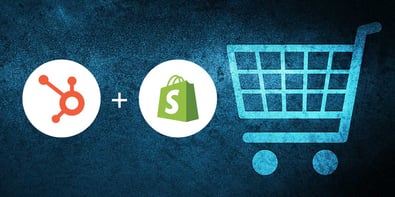What is CRM-based advertising and how to do it in practice

CRM-based advertising will help you enhance the outcomes of your paid search and paid social efforts. But what does that mean in practice?
Digital advertising in paid social media or paid search is not always efficient. Still, we do it because we fear if we didn’t, we wouldn’t get anywhere near the same results we do now.
It’s not always easy to know what elements of our advertising strategy work and which ones do not, even with all the data available. For example, what does it really mean that someone has clicked your ad? It’s nice to know someone has clicked, but so what? A click doesn’t mean that they will eventually buy something from you or even visit your website.
One way to improve your digital advertising strategy is to think about ads more contextually and align advertising efforts with the buyer’s journey. This approach is often described as CRM-based advertising or journey-based advertising.
How do you tailor the targeting and creatives to bring value to your customers in each step of the buyer’s journey? Let's explore this topic next.
Ads and the buyer’s journey
A handy way to categorize ads is to align them with awareness stage ads, consideration stage ads, and decision stage ads. Each has its own purpose and approach.
Advertising in the awareness stage
Generally speaking, the awareness stage of the buyer’s journey occurs when the prospect faces a problem. They’re researching to more clearly understand, frame, and give a name to that problem.
Awareness stage ads usually focus on addressing the problem your buyer persona is experiencing.
For example, you could provide a piece of educational content that helps the person seeing the ad start to describe their problem. Similarly, you could use a piece of content that demonstrates your knowledge and understanding of that problem.
Advertising in the consideration stage
The prospect moves to the consideration stage when they’ve defined and given a name to their problem or opportunity. At this stage, they’re researching and understanding all the available approaches or methods to solving their defined problem.
Consideration stage ads could explain how your visitors will solve their problems. These ads will help the customer understand why your offer is the best one to give them the solution they need.
During the consideration phase is also when you could do remarketing or retargeting. These strategies involve targeting ads to someone who has interacted with your brand, visited your website, or taken an equivalent action.
Advertising in the decision stage
The decision stage is when your prospect has decided on their solution strategy, method, or approach. This point is when they might compile a long list of all available vendors and products in their given solution strategy.
Consider highlighting product offers, services, trials, or demo offerings in the decision phase.
All of these options are probably ones that you’re familiar with already. In addition, the buyer’s journey is not that neat and linear. People interact with brands on smartphones, laptops, via websites, and social – you can’t dictate to your prospects how they should interact with you.
So what can you do to maintain advertising efficiency?
One way to approach the dilemma is to strive for a more data-driven approach to advertising. How do you crack that? The answer may lie in your CRM system.
7 examples of how to use the HubSpot CRM to back up your advertising
HubSpot’s CRM is a powerful tool to help you enhance your digital advertising strategy and see better results. Here are seven examples of how you can use it to back up your advertising efforts:
1. Lookalike audiences
The first and most obvious thing you can do is to use CRM data to create a list of your best customers. Then, you can use that list to create lookalike audiences in the ad platforms.
Because the target audience is based on your happy customers, the lookalike audience based on it should get you closer to reaching the right people. Reaching the right people, in turn, will translate to better click-throughs and higher-quality campaigns.
2. Exclusion audiences
List-based audiences are useful for exclusion audiences, too. One of the most obvious use cases is excluding customers who have already purchased the product from your ads targeting.
You could also exclude audiences that you want to target with a different campaign. For example, if you’re running one campaign geared toward younger customers, you might exclude customers over age 35.
3. Retargeting audiences
Your lists can also provide a good base for retargeting or remarketing.
Retargeting often involves displaying ads to target users who have previously engaged with your site (without purchasing anything).
Once someone visits your site and clicks on a product or takes another action, a cookie gets set in their browser. You can then use that information to retarget them and present them with ads based on their past reactions.
Remarketing, on the other hand, often involves reconnecting with past customers via email. If it’s been a while since someone last bought from you, for example, you might reach out with a discount on their next purchase.
4. Use ads interaction as a workflow trigger to automate follow up
Ads interaction refers to something trackable that involves your ad, such as identifying which contacts clicked through to your website from a specific ad.
You can utilize this information to follow up with the engagement in a timely manner. In HubSpot, you can use workflows to automate this process and send follow-up emails or other communications.
How would this play out in a real-life scenario?
Let’s say you are an e-commerce business and already have an excellent customer base in your HubSpot CRM from people who have purchased your product previously. You have a new seasonal offering or new products that you want to advertise to them on Facebook.
You can use HubSpot to create a workflow that sends a discount code for the exact product the contact engaged with through a Facebook ad.
5. Use workflows to prevent audience overlap
Perhaps you don’t want to show an ad to someone targeted by other ad campaigns. For example, you might want to ensure you are not showing awareness-type ads to folks who are further along in the buyer’s journey. In this case, you can use workflows to automate that process and prevent audience overlap.
To do this, simply use ads interaction as the enrollment trigger for your workflow. Then, select workflow action to exclude this contact from another ad’s audience. That’s it!
6. Use workflows for cross-platform targeting
You can also use workflows to manage ads audiences across platforms. For example, if you want to align your Google Display audience and Facebook audience and show relevant ads on each platform, you can do that using workflow.
A real-life scenario could look something like this.
Let’s say you want to use Google Display to gain brand awareness and attract visitors to your website. The goal is for the visitors to take some kind of action on your website.
To do this, you might ask them to check out the availability of a solution or service by entering their address and filling in a form on your website. They could also do an assessment and get a report to their email or sign up for a free trial.
Once you’ve identified your goal and conversion point, the next step is to communicate your value to the contact in another format and channel, such as Facebook. If you want to show a series of how to do XYZ with your product video ads (or something similar), a workflow can help to coordinate cross-platform interaction and simplify this process.
To create this kind of workflow, you’ll first select the enrollment trigger as ads interaction, just like in the previous example. Next, you’ll choose add to ads audience, select your ad account, and provide the audience name. There you have it!
Something to note:
List-based audiences have size criteria for each ad network before they can run. And, to be able to utilize CRM, the contact has to be identified.
7. Use CRM data for ads optimization
One extremely powerful way to use your CRM data with ads is to sync conversion events between your CRM and the ads platforms. HubSpot allows you to create and sync conversion events with Google, Facebook, and LinkedIn.
There are some differences between how the conversion events work in the different systems. For example, you could use a lifecycle stage as the optimization event.
This option will allow the ad network to optimize ad delivery based on a real revenue-attributed event that happens in your CRM. For example, whenever a contact is set as a sales-qualified lead, the system would know this is the type of conversion you want.
The next steps
Don’t just shoot money into the sky and hope it will work. CRM-based advertising will help you enhance the outcomes of your paid search and paid social efforts and optimize advertising with real revenue-tied KPIs.
If you need expert help to craft a journey-based advertising strategy or learn how to utilize CRM in advertising, contact us at Prami Growth Agency today.

